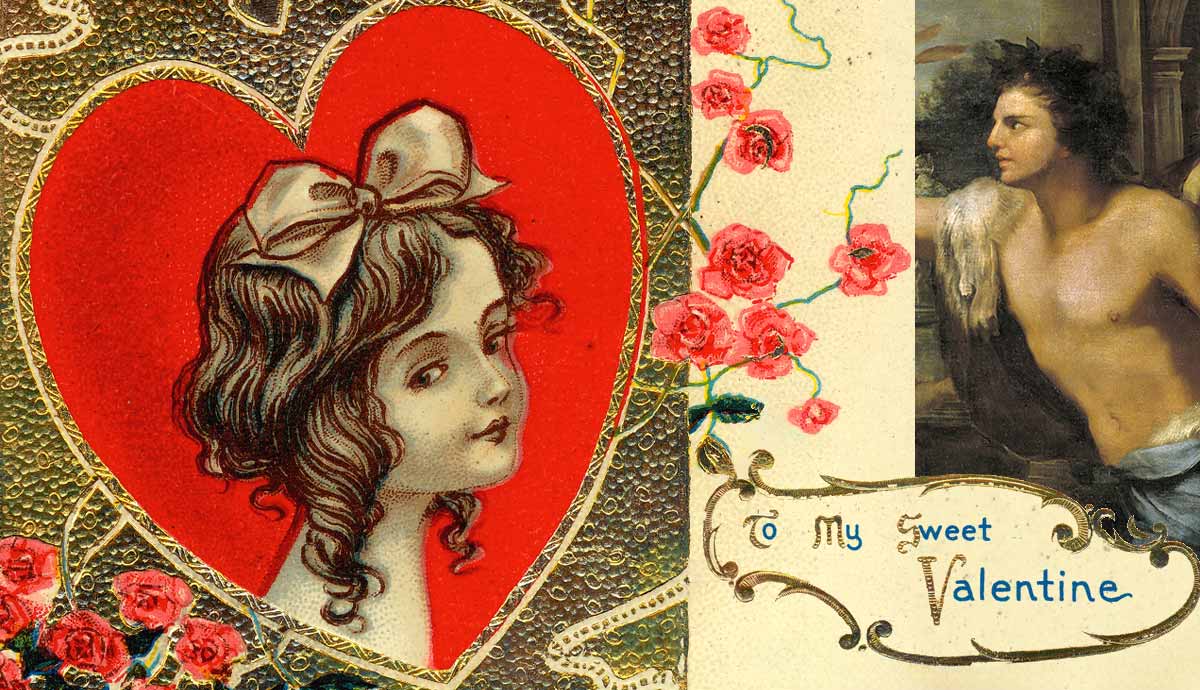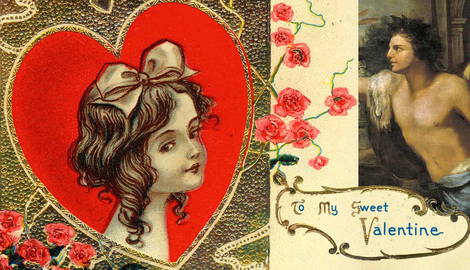
Valentine’s Day falls on February 14th each year. Valentine’s Day is a time for people to show appreciation and affection for those they care about. Through the exchange of cards and gifts, the “day of love” is celebrated across the world by people from all walks of life. Some say that the history of Valentine’s Day can be traced to the ancient Roman festival of Lupercalia. Others say it is rooted in the history of Saint Valentine himself. The evidence indicates that the origins of Valentine’s Day are more likely tied to a 14th-century poem by Geoffrey Chaucer than to a 3rd-century Christian saint.
Ancient Origins

The ancient Roman festival of Lupercalia offers the earliest potential origin of Valentine’s Day. Dating back to longstanding ancient pastoral traditions, Lupercalia was a pagan fertility festival dedicated to Faunus, the Roman god of agriculture. The festivals name likely stems from the Latin “lupus” (wolf), in connection with Lupercus, the shepherd god (“he who wards off the wolf”) and the she-wolf (Lupa) that suckled Romulus and Remus, the legendary founders of the city of Rome.
The festival was held on February 15th and featured several peculiar rituals. The celebration commenced with the sacrifice of goats (and sometimes dogs), before the Luperci (priests of Lupercus) ran around the Palatine Hill half-naked, striking women with trips of flayed hide. Bizarre as it may seem, the act was believed to enhance fertility, cleanse the land, and ward off evil spirits. Lupercalia was extremely popular and one of the few pagan holidays still celebrated 150 years after Christianity was legalized in the Roman Empire.
The Myth of Saint Valentine

The difficulty in tracing the story of Saint Valentine is that there was not one, but two. Little is known about the two Saint Valentine’s. One is said to have been a bishop from Terni in central Italy, the other a priest from Rome, it is also possible that neither of them existed. Either way, one of the two was allegedly martyred on February 14th 269. Nonetheless – though hagiographic – the story of Saint Valentine is fairly consistent. Whether a bishop from Terni, or Roman Priest, Saint Valentine conducted clandestine weddings against the wishes of the Roman authorities in the 3rd century.
After being imprisoned in the home of a local noble, Valentine healed his captor’s blind daughter, reading the family to convert to Christianity. Before the Romans then tortured and decapitated him, he sent a note to the daughter, signed “your Valentine.” Curiously, as well as being the patron saint of lovers, Saint Valentine is also the patron saint of epileptics and beekeepers.
The Contribution of Geoffrey Chaucer

In the late fourteenth century, the English poet Geoffrey Chaucer penned “Parliament of Fowls” – which later became part of his celebrated work “The Canterbury Tales” – and introduced the association of romance to the legacy of Saint Valentine. Chaucer’s poem presents a dream vision, where the narrator, upon falling asleep, is transported to a utopian realm, where he encounters an assembly (parliament) of birds, gathered in early spring to select their mates. Chaucer’s dreamlike narrative of nature, love, and desire occurs on “seynt valentynes day.”
Following Chaucer’s lead, fifteenth-century poets began writing verse known as “Valentines” to express affection for their beloveds. It was in this period that Saint Valentine became associated with romantic love. Chaucer’s depiction of Valentine’s Day as the moment when birds united in pursuit of love, serves as the reference point that has linked Valentine’s Day to romance in the present. Parliament of Fowls, it turns out, sparked a tradition.
A Brief History of the Valentine’s Day Card

The earliest known Valentine’s Day card was sent in 1477 by Margery Brews, an Englishwoman from Norfolk, to her cousin John Paston, in which she affectionately addressed him as “my right well beloved Valentine.” During the Victorian era, the tradition of sending Valentine’s Day cards became popular. With the advent of the printing press and the expansion of postal services in the nineteenth century, Valentine’s Day cards became accessible to a wider audience.
Over time Victorian era Valentine’s Day cards became increasingly sentimental. Crafted from fine materials, such as lace and silks, cards were often adorned with romantic poetry, and motifs of flowers, hearts, and cupids, reflecting the romantic ideals of the time. In the United States, the tradition of Valentine’s Day cards was propelled by Ester Howland, an artist from Massachusetts. After being sent a Valentine’s Day card from England, she was inspired to create her own. Howland’s cards quickly entered mass production, greatly contributing to the popularization of Valentine’s Day in America.
Valentine’s Day Today

Since the Victorian era, Valentine’s Day has been characterized by gestures of affection, conveyed through cards, red roses, and chocolate. Cards and gifts are sent by secret admirers, and couples go out for romantic dinners. Valentine’s Day in the twenty-first century is a major commercial event. Cards and gifts, dining, entertainment, and online shopping promotions: the business of Valentine’s Day is colossal. According to the annual survey of the National Retail Federation of America, total spending on significant others for Valentine’s Day 2024 is set to reach a record $14.2 Billion.
In India, some embrace Valentine’s Day while others condemn it as contrary to Indian (Hindu) values. In Mexico, “Dia de San Valentin”, or “Dia del Amor y la Amistad” (Day of Love and Friendship) highlights both friendship and romantic love. The exact festivities of Valentine’s Day vary from place to place yet the essence remains the same: a celebration of love in all its various forms.










